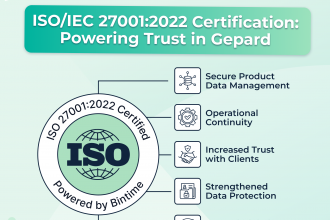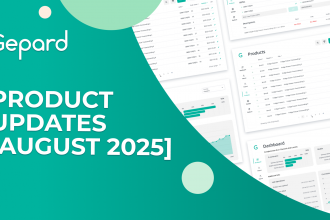What Is Customer Longevity?
Customer longevity meaning can refer to the duration or lifespan of the relationship between a client and a business. It measures the length of time a client remains engaged, loyal, and continues to transact with a specific company or brand. It is an important metric as it indicates the effectiveness of their retention strategies, satisfaction levels, and overall customer loyalty.
Factors Influencing Customer Longevity
There are several factors that can influence this metric, impacting the duration of the client-business relationship. Here are some key factors:
- Satisfaction. Satisfaction with the products, services, and overall customer experience plays a crucial role. When clients are consistently satisfied with their interactions and perceive value in their relationship with the business, they are more likely to stay loyal and continue their patronage.
- Customer Service. Prompt and effective resolution of issues, personalized assistance, and attentive support contribute to building trust and fostering long-term relationships with clients.
- Product or Service Quality. The quality and reliability of the products or services offered by a business influence customer loyalty. Consistently delivering high-quality offerings that meet or exceed client expectations can contribute to longer-lasting relationships.
- Competitive Advantage. Businesses that can differentiate themselves from competitors by offering unique features, superior value, or innovative solutions are more likely to retain clients over the long term. A strong competitive advantage can create a barrier to switching to other providers.
- Communication and Engagement. Regular and meaningful communication with clients, such as personalized interactions, targeted marketing campaigns, and relevant updates, helps maintain engagement and fosters a sense of connection with the business.
- Loyalty Programs and Incentives. The presence of loyalty programs, rewards, or incentives can incentivize customers to remain loyal. These programs provide additional value and benefits to clients, encouraging them to continue their relationship with the business.
- Trust and Reputation. Building trust through transparent and ethical business practices, maintaining a positive reputation, and demonstrating reliability are key factors influencing customer longevity. Trustworthy businesses are more likely to retain clients over the long term.
By focusing on these factors and continuously improving customer satisfaction, businesses can enhance customer longevity and foster enduring relationships that benefit both parties involved.
Measuring Customer Longevity
Measuring customer longevity involves assessing the duration and strength of client relationships with a business or brand. Here are alternative approaches to measuring this metric.
- Retention Rate. The customer retention rate measures the proportion of customers who maintain their involvement with a company during a designated timeframe. By monitoring this rate, businesses can gauge their capacity to retain customers and evaluate the effectiveness of their relationships.
- Referral Rate. The referral rate measures the number of customers who refer new customers to a business. Clients who refer others demonstrate loyalty and satisfaction, indicating a higher likelihood of long-term engagement.
- Customer Satisfaction and Net Promoter Score (NPS). Measuring satisfaction through surveys or feedback can provide insights into their overall experience. Additionally, NPS assesses the likelihood of clients recommending a business to others. High satisfaction and positive NPS scores indicate stronger loyalty and longevity.
- Qualitative Feedback and Testimonials. Collecting qualitative feedback and testimonials from clients allows businesses to understand their experiences, level of engagement, and loyalty. Positive feedback and testimonials often indicate a longer-lasting relationship with the brand.
- Customer Journey Analysis. Examining the customer journey from initial contact to repeat purchases can shed light on the length of customer engagement. Mapping out touchpoints, interactions, and conversion stages provides insights into the stages where clients drop off or continue their engagement.
- Social Media Mentions and Sentiment Analysis. Monitoring social media mentions and sentiment regarding a business can help gauge client sentiment and longevity. Positive mentions and sentiments indicate stronger customer engagement and loyalty.
How To Improve Customer Longevity
To build strong, long-lasting relationships, businesses should focus on two key strategies for customer longevity in marketing: fostering personalized experiences and establishing effective communication channels.
Firstly, personalization is crucial for enhancing engagement and loyalty. By understanding individual client preferences and tailoring products, services, and interactions accordingly, businesses can create unique experiences that resonate with clients on a deeper level. This can involve leveraging customer data to provide personalized recommendations, offers, and promotions. By making clients feel valued and understood, businesses can significantly improve longevity.
Secondly, establishing effective communication channels is essential. Regular and meaningful communication helps businesses stay connected with their customers and maintain ongoing engagement. This can be achieved through various channels such as email marketing, social media platforms, or personalized notifications. By sharing valuable content, providing updates on new products or features, and seeking client feedback, businesses can demonstrate their commitment to satisfaction and foster a sense of connection. Additionally, businesses should consider implementing loyalty programs that reward clients for their engagement and purchases, further incentivizing long-term loyalty.
Examples Of Customer Longevity In eCommerce
Skincare brand
A skincare brand offers a subscription-based model where clients can sign up to receive their favorite products on a recurring basis. By providing convenience, cost savings, and personalized product recommendations based on customer preferences, the brand fosters loyalty and encourages long-term engagement. Clients enjoy the convenience of automatic deliveries and personalized experiences, leading to increased customer longevity.
Online clothing retailer
An online clothing retailer implements a comprehensive loyalty program. Customers earn points for every purchase, engagement on social media, and referrals. These points can be redeemed for discounts, exclusive access to new collections, or even personalized styling sessions. By rewarding clients for their engagement and creating a sense of exclusivity, the retailer strengthens loyalty and encourages repeat purchases, ultimately improving customer longevity.
Online bookstore
An online bookstore uses sophisticated algorithms and customer data analysis to provide personalized book recommendations to its clients. By leveraging purchase history, browsing behavior, and customer preferences, the bookstore tailors its product suggestions to match each customer’s interests. This personalized approach enhances the customer’s shopping experience, increases satisfaction, and drives long-term engagement and loyalty.

